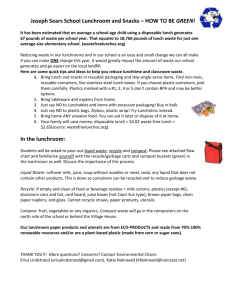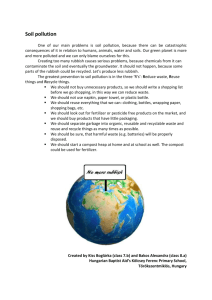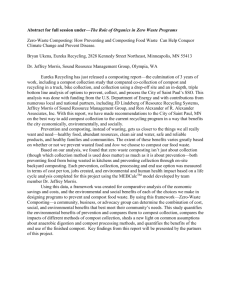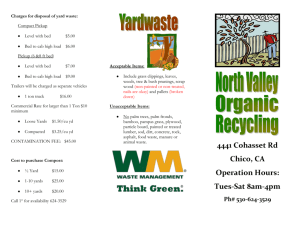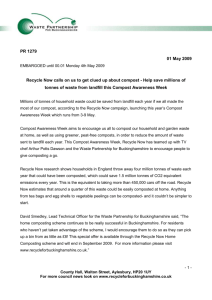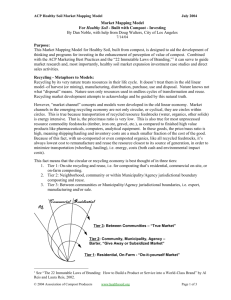Green Lunch Menu Tips - Union School District
advertisement
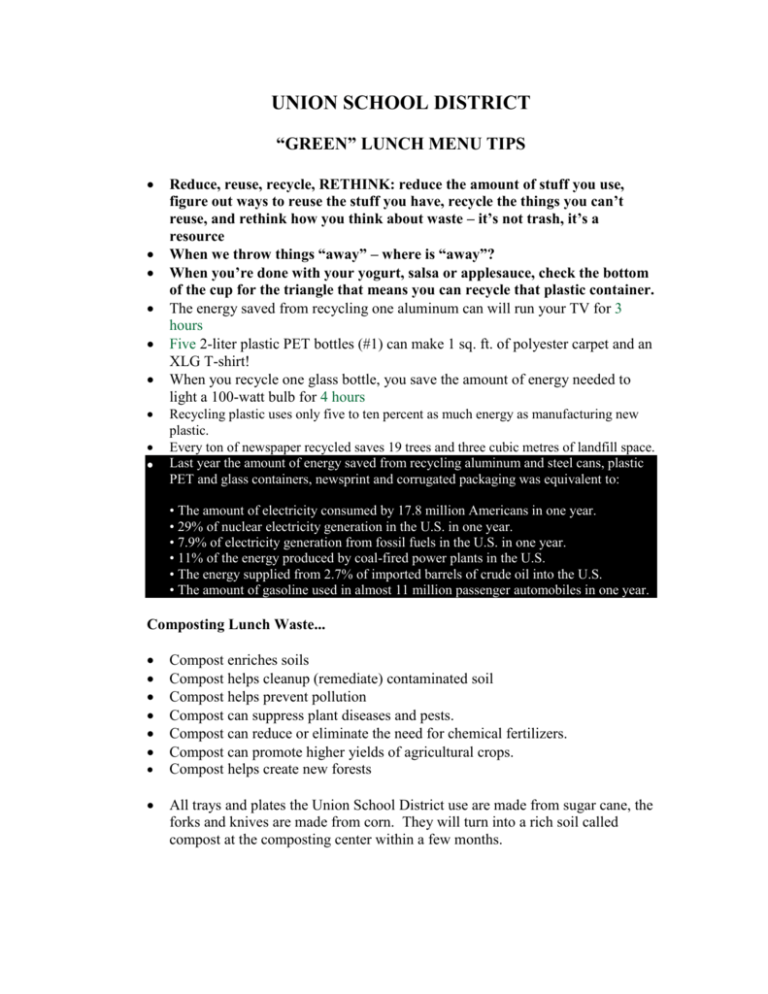
UNION SCHOOL DISTRICT “GREEN” LUNCH MENU TIPS Reduce, reuse, recycle, RETHINK: reduce the amount of stuff you use, figure out ways to reuse the stuff you have, recycle the things you can’t reuse, and rethink how you think about waste – it’s not trash, it’s a resource When we throw things “away” – where is “away”? When you’re done with your yogurt, salsa or applesauce, check the bottom of the cup for the triangle that means you can recycle that plastic container. The energy saved from recycling one aluminum can will run your TV for 3 hours Five 2-liter plastic PET bottles (#1) can make 1 sq. ft. of polyester carpet and an XLG T-shirt! When you recycle one glass bottle, you save the amount of energy needed to light a 100-watt bulb for 4 hours Recycling plastic uses only five to ten percent as much energy as manufacturing new plastic. Every ton of newspaper recycled saves 19 trees and three cubic metres of landfill space. Last year the amount of energy saved from recycling aluminum and steel cans, plastic PET and glass containers, newsprint and corrugated packaging was equivalent to: • The amount of electricity consumed by 17.8 million Americans in one year. • 29% of nuclear electricity generation in the U.S. in one year. • 7.9% of electricity generation from fossil fuels in the U.S. in one year. • 11% of the energy produced by coal-fired power plants in the U.S. • The energy supplied from 2.7% of imported barrels of crude oil into the U.S. • The amount of gasoline used in almost 11 million passenger automobiles in one year. Composting Lunch Waste... Compost enriches soils Compost helps cleanup (remediate) contaminated soil Compost helps prevent pollution Compost can suppress plant diseases and pests. Compost can reduce or eliminate the need for chemical fertilizers. Compost can promote higher yields of agricultural crops. Compost helps create new forests All trays and plates the Union School District use are made from sugar cane, the forks and knives are made from corn. They will turn into a rich soil called compost at the composting center within a few months. It’s best to eat as much of your lunch as you can. When you’re done, the leftover food can go into the composting (green) container to be turned into soil to create new food plants. You can perform magic: turn a carrot into a tomato by composting! In just a few months in a compost bin, a carrot becomes new rich soil and the soil can produce a tomato plant. (Eat most of your carrots first, though.) In four months, your lunch waste will be turned into compost that is a rich soil for landscapers and golf courses.




